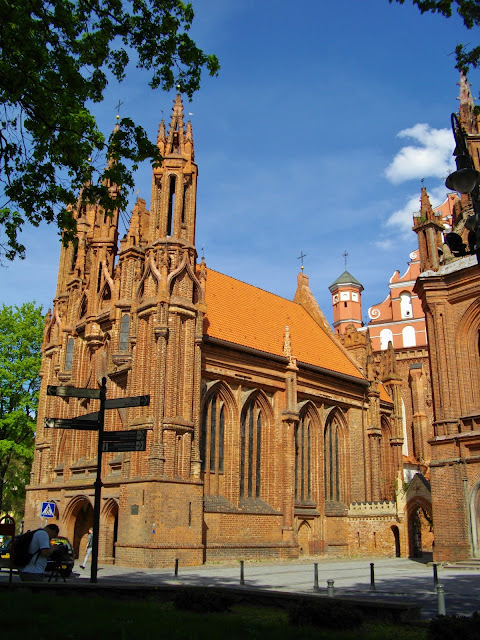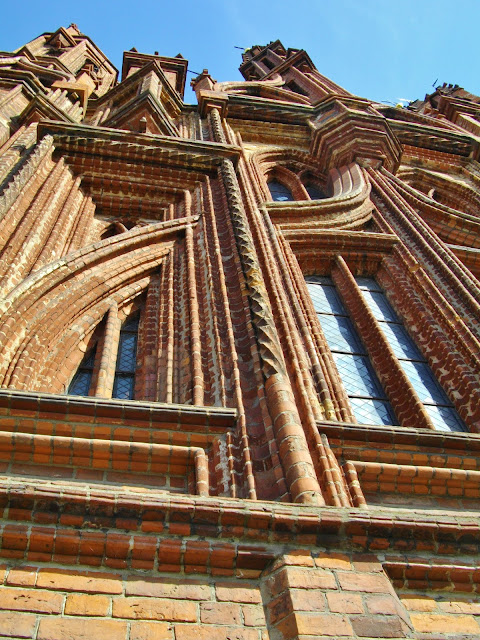VILNIUS
Historian Romas Batūra identifies the city with Voruta , one of the castles of Mindaugas , crowned in 1253 as Knight of Lithuania . During the reign of Vytenis a city started to emerge from a trading settlement and the first Franciscan Catholic church was built.
The city was first mentioned in written sources in 1323, when the Letters of Grand Duke Gediminas were sent to German cities inviting German members of the Jewish community to settle in the capital city, as well as to Pope John XXII. These letters contain the first unambiguous reference to Vilnius as the capital; Old Trakai Castle had been the earlier seat of the court of the Grand Duchy of Lithuania.
According to legend, Gediminas dreamt of an iron wolf howling on a hilltop and consulted a pagan priest for its interpretation. He was told: "What is destined for the ruler and the State of Lithuania, is thus: the Iron Wolf represents a castle and a city which will be established by you on this site. This city will be the capital of the Lithuanian lands and the dwelling of their rulers, and the glory of their deeds shall echo throughout the world". The location offered practical advantages: it lay within the Lithuanian heartland at the confluence of two navigable rivers, surrounded by forests and wetlands that were difficult to penetrate. The duchy had been subject to intrusions by the Teutonic Knights.The Old Town of Vilnius , one of the largest surviving medieval old towns inCentral Europe , has an area of 3.59 square kilometres (887 acres). It encompasses 74 quarters, with 70 streets and lanes numbering 1487 buildings with a total floor area of 1,497,000 square meters. The oldest part of the Lithuanian capital of Vilnius , it has developed over the course of many centuries, and has been shaped by the city's history and a constantly changing cultural influence. It is a place where some of Europe's greatest architectural styles -gothic,renaissance,baroque and neoclassical - stand side by side and complement each other.
Pilies street is the Old Town's main artery and the hub of cafe and street market life. The main street of Vilnius,Gediminas av., is partially located in the Old Town. The central squares in the Old Town are the Cathedral square and the Town Hall square .
One of the most elaborate architectural complexes is the Vilnius University Architectural Ensemble, which occupies a large part of the Old Town and has 13 courtyards. It was selected to represent Lithuania in the Mini-Europe Park in Brussels.
In 1994 the Vilnius Old Town was included in the UNESCO World Heritage List (No. 541) in recognition of its universal value and originality. The definition of "historic center" itself has a broader meaning than the Old Town, formerly encircled with defensive walls. It embraces the valuable historical suburbs of Vilnius, such as Uzupis , which historically used to be outside the city boundaries. Therefore Užupis is often considered a part of the Old Town of Vilnius.





























































































































































































































































































































































































































































No comments:
Post a Comment